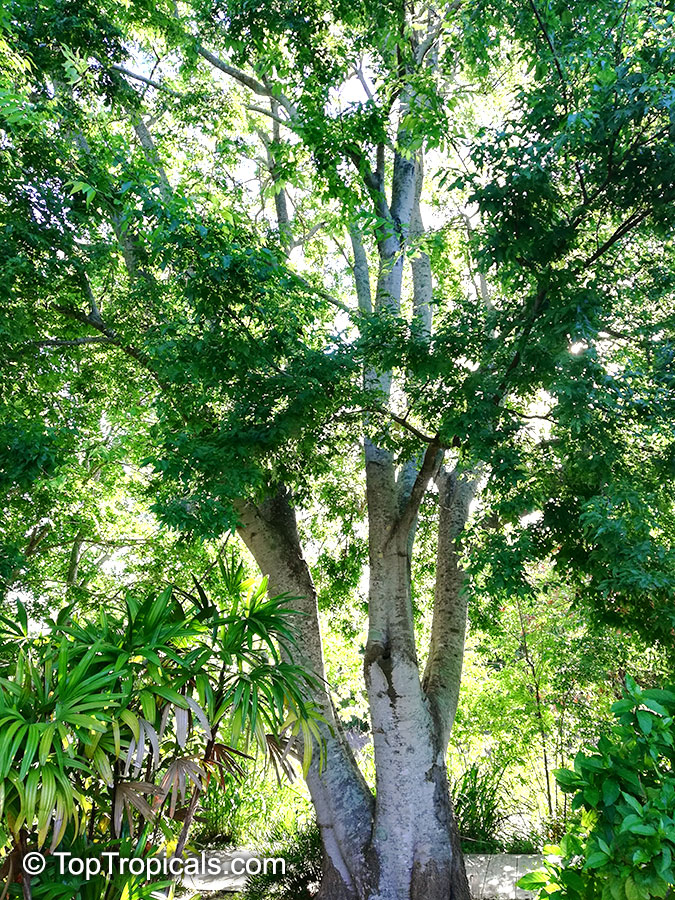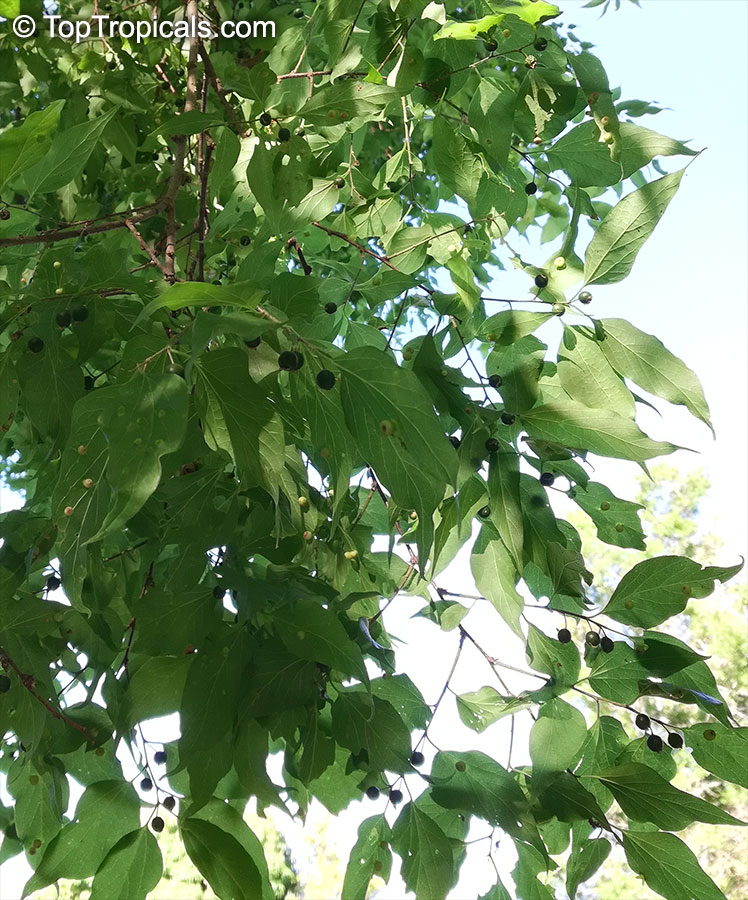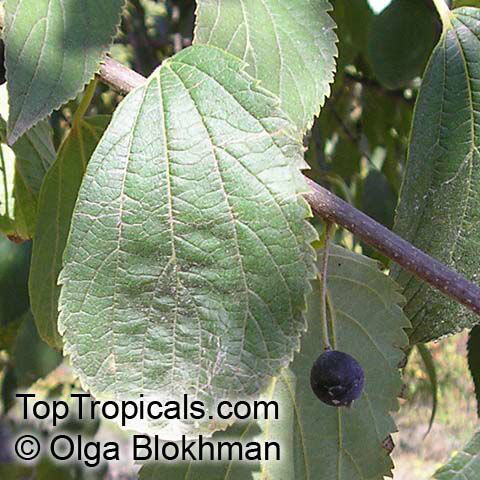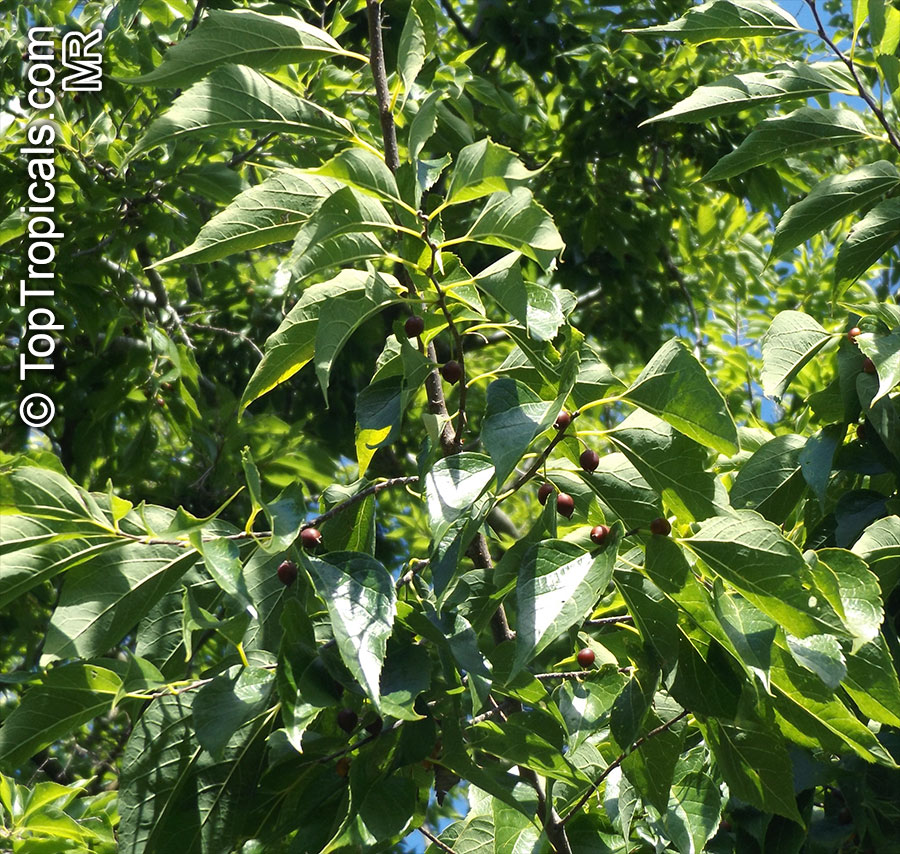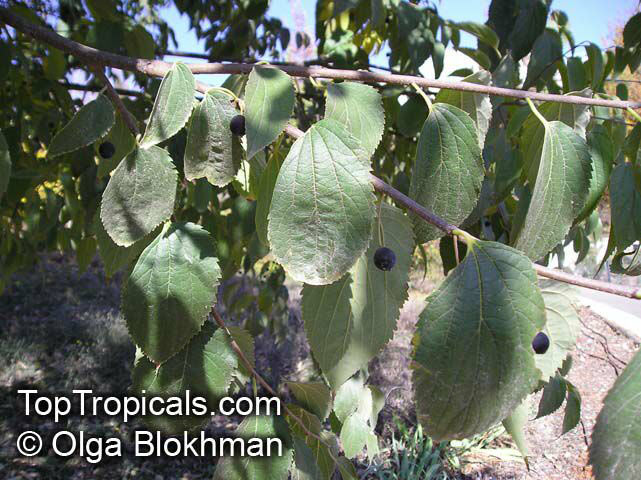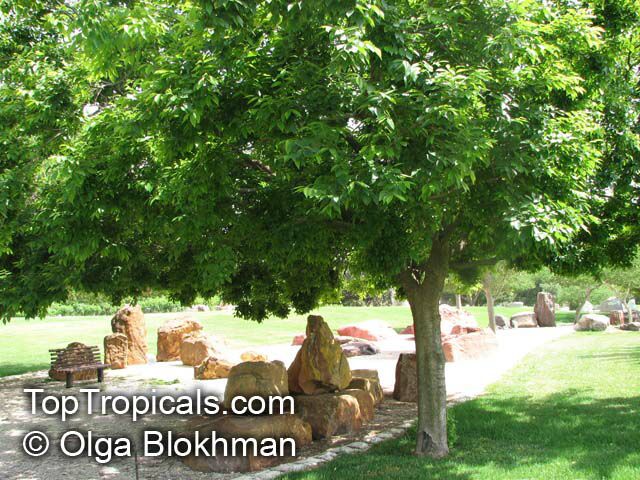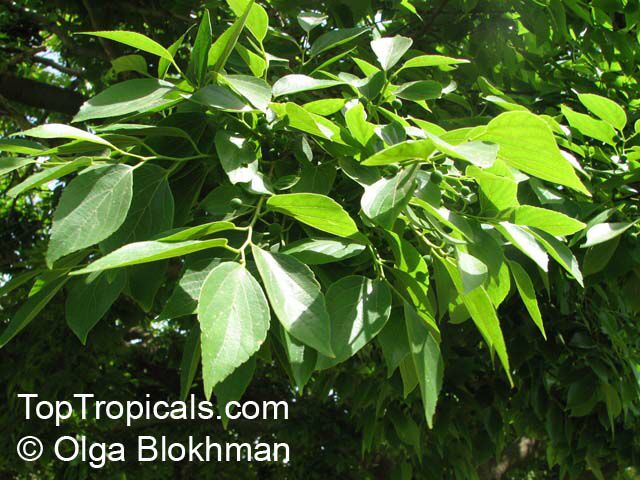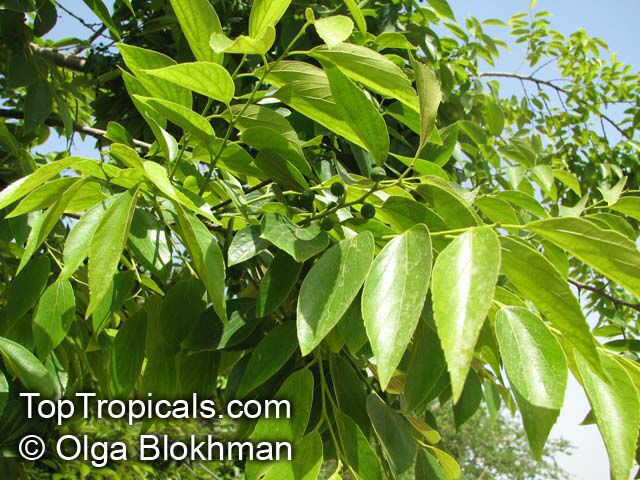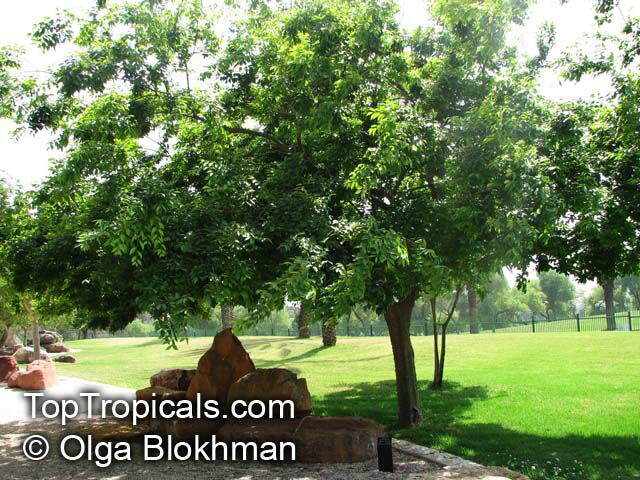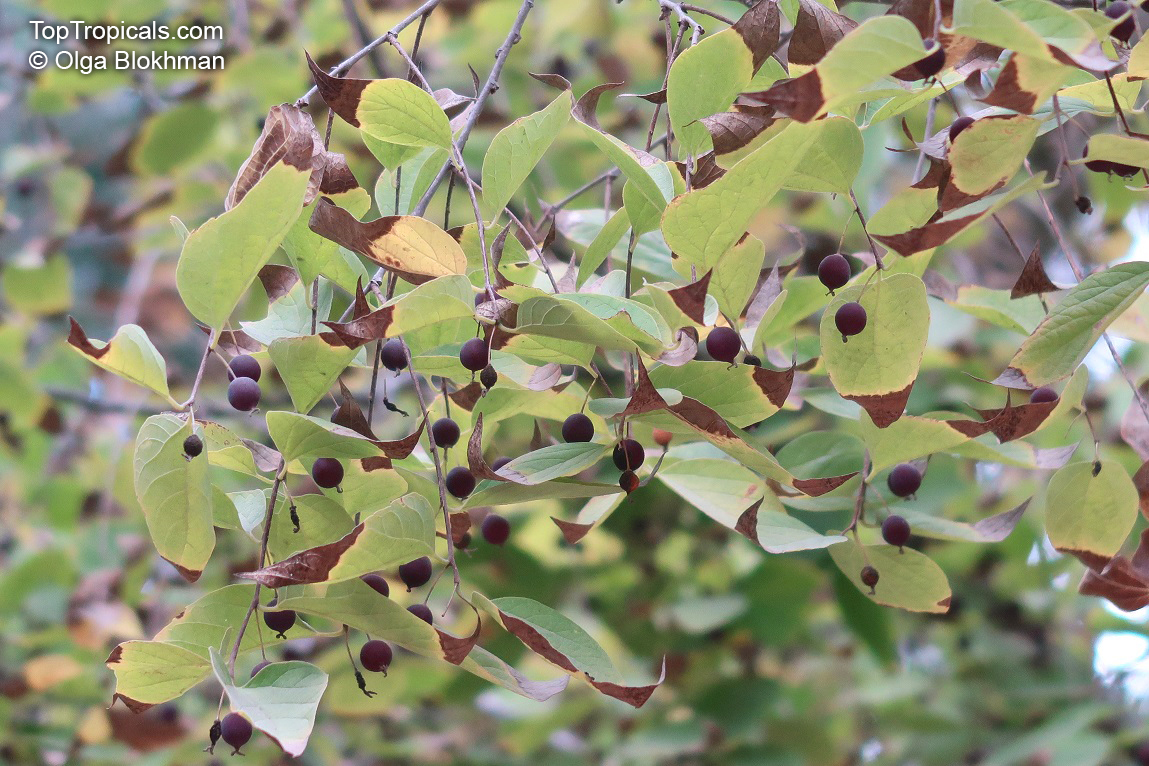Celtis sp. (Bunge's Hackberry)
Top Tropicals Plant Encyclopedia
Botanical name: Celtis sp.
Common name: Bunge's Hackberry
Family: Ulmaceae
Origin: East Asia








Celtis sp. (Bunge's Hackberry) is a small deciduous tree that originates from East Asia, making it a popular choice for landscaping. Growing 10-20 feet in height and width with a medium growth rate and an upright branching structure, this plant can provide shade and beauty throughout the year. It does best when it is planted in an area receiving full sun to partial shade and moderate water. Hardy in USDA Zones 3-8 and able to withstand lows of 30s F for a short time, it is an ideal choice for smaller yards and gardens.
This small tree also serves as a food source for locals, with its leaves being a savoury addition to rice dishes and as a tea substitute. In addition, its fruits are edible and sweet, with a dark-purple hue that is popular with birds and other wildlife. In warmer climates, this plant can produce around 20-30 fruits per year, with the bounty ripening in June or July. Not only are these fruits edible, they also contain vitamins and minerals that provide a healthy boost to the diet.
Celtis sp. (Bunge's Hackberry) is a great choice for smaller gardens, as it thrives in a variety of soils and doesn't require a lot of maintenance. When grown in a pot, it's important to ensure it has adequate drainage and is brought indoors during cold winters. This plant also attracts beautiful butterflies, hummingbirds and other wildlife, making it a great addition to any yard or garden.

